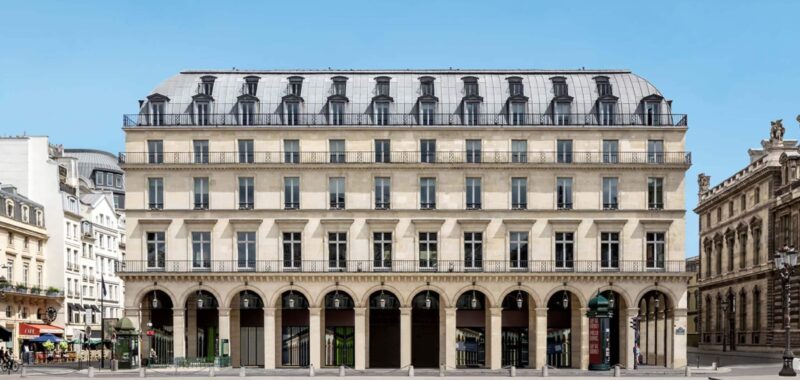To mark its 40th anniversary the Fondation Cartier pour l’Art Contemporain is preparing to decamp from its glassy outpost along Boulevard Raspail and into a historic building on Place du Palais-Royal, in the heart of Paris. The renovation will again be headed by Jean Nouvel.
Founded in 1984 by Alain Dominique Perrin, the Fondation Cartier was France’s first corporate foundation for contemporary art. It provided a space for established and emerging artists to explore and collaborate across diverse disciplines through exhibitions and residencies. Its first gallery location was located in Jouy-en-Josas—an innovative design that dematerialized architecture.
In 1994, the Fondation Cartier moved from its location at Jouy-en-Josas to a glass-and-steel structure on Boulevard Raspail. In the design, Jean Nouvel emphasized transparency and fluidity, replacing conventional walls with open, adaptable spaces. The space fostered a dynamic relationship between art, architecture, and the city.

The Haussmannian building facing Place du Palais-Royal was originally constructed in 1855 as the Grand Hôtel du Louvre. Haussmannian architecture, which defines much of Paris, is characterized by its stone facades, French double windows, and chimneys now synonumous with the urban fabric of Paris. It later transitioned into the Grands Magasins du Louvre in 1863 and in 1978 became the Louvre des Antiquaires. In late 2025, Fondation Cartier will relocate to space, marking its next chapter.
With this building project , Jean Nouvel seeks to bring ongoing renewal of the space, creating opportunities for artists to undertake new creative ventures and processes that align with the Fondation Cartier’s dedication to support creativity.
“The Fondation Cartier will likely be the institution offering the greatest differentiation of its spaces, the most diverse exhibition forms and viewpoints,” said architect Jean Nouvel. “Here, it is possible to do what cannot be done elsewhere, by shifting the system of the act of showing.”
The facade of the historic building features expansive bay windows, while the large exhibition space is defined by its tall ceilings and graceful arches. Natural light filters through the arched windows and openings. The renovated building offers over 90,000 square feet (8,500 square meters), with a large portion dedicated to exhibitions.

Architectural interventions, within the historic structure, namely a series of mobile platforms augment the usable gallery space and promote circulation through the building. These “layered vertical spaces” will reach up to 11 meters high.
“The space is marked by a different way of doing: a way of conceiving how artists can have maximum power of expression,” added Nouvel. “A site such as this one calls for boldness, courage that artists might not necessarily demonstrate in other institutional spaces.”

